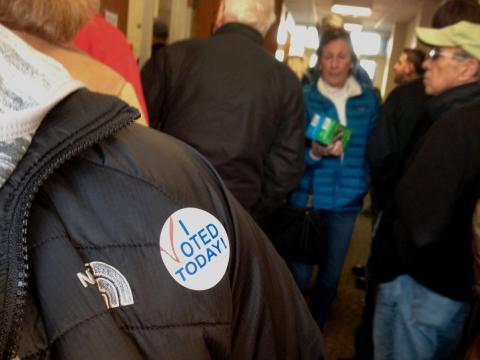According to a study conducted by graduate students at NYU’s Wagner School of Public Service, the city boasts one of the lowest voter turnout rates of any metropolis in the United States.
"In the 2009 general election for mayor, fewer than one in five New Yorkers of voting age cast a ballot (18.4 percent). In the November 2010 federal midterm and New York state election, turnout in the city was significantly lower (28 percent) than in the rest of the state (53 percent) and nationally (46 percent).
"Even among other large urban areas, New York consistently ranks lower in voter turnout. A greater portion of registered voters cast ballots in Los Angeles, Chicago, and Philadelphia during the 2008 presidential and 2010 Congressional elections."
The extremely low turnout in the city suggests that election results are tailored toward the interests of a relative few and the closed primary system doesn’t help.
There are 3.2 million registered Democrats in the city, only 510,000 Republicans, but there are more than 826,000 voters who identify with no party at all.
The city's electoral code mandates that a voter must be affiliated with a party within one calendar year of a primary in order to be eligible to participate. That means almost one-fifth of registered voters are excluded from primary elections.
In 2001, the most recent mayoral election without an incumbent, 785,365 Democrats (roughly 25% of those registered Democratic and around 16% of registered voters overall) split their primary votes over five candidates, which led to a primary runoff. Only 72,365 Republicans (about 14% of those registered Republican and 11% of registered voters overall) participated in their primary, giving Mayor Michael Bloomberg an easy advantage over his lone competitor, Herman Badillo.
Bloomberg needed only 48,055 votes to win the Republican primary, while four Democratic hopefuls received more votes in their primary. Mark Green needed over 400,000 votes in the run-off to make it through the Democratic primary.
The city’s current electoral code demands that a candidate must receive 40 percent of the primary vote in order to proceed on to the general election. Primaries are held in early September, with a runoff primary taking place at least two weeks later if no one receives the required plurality.
The rationale behind runoff primary elections is that they provide greater legitimacy to the candidate who ultimately wins. But, in reality, it costs much more to administer and draws out the process to make it to a general election.
There has been a runoff election in every Democratic primary, but two since the system was introduced in 1973. However, there has never been one for a Republican primary.
In the past forty years there have never been more than two Republicans involved in a GOP primary, while there have been at least four Democratic hopefuls involved in their party’s race -- ostensibly explained by the massive discrepancy between voter registration numbers.
This primary system leads to results determined by a select few, then to a run-off that usually has an even lower turnout. An exclusion of third-party and non-affiliated voters not only drives turnout down in the primary, but it creates a general election ballot that's not representative of New York City.
